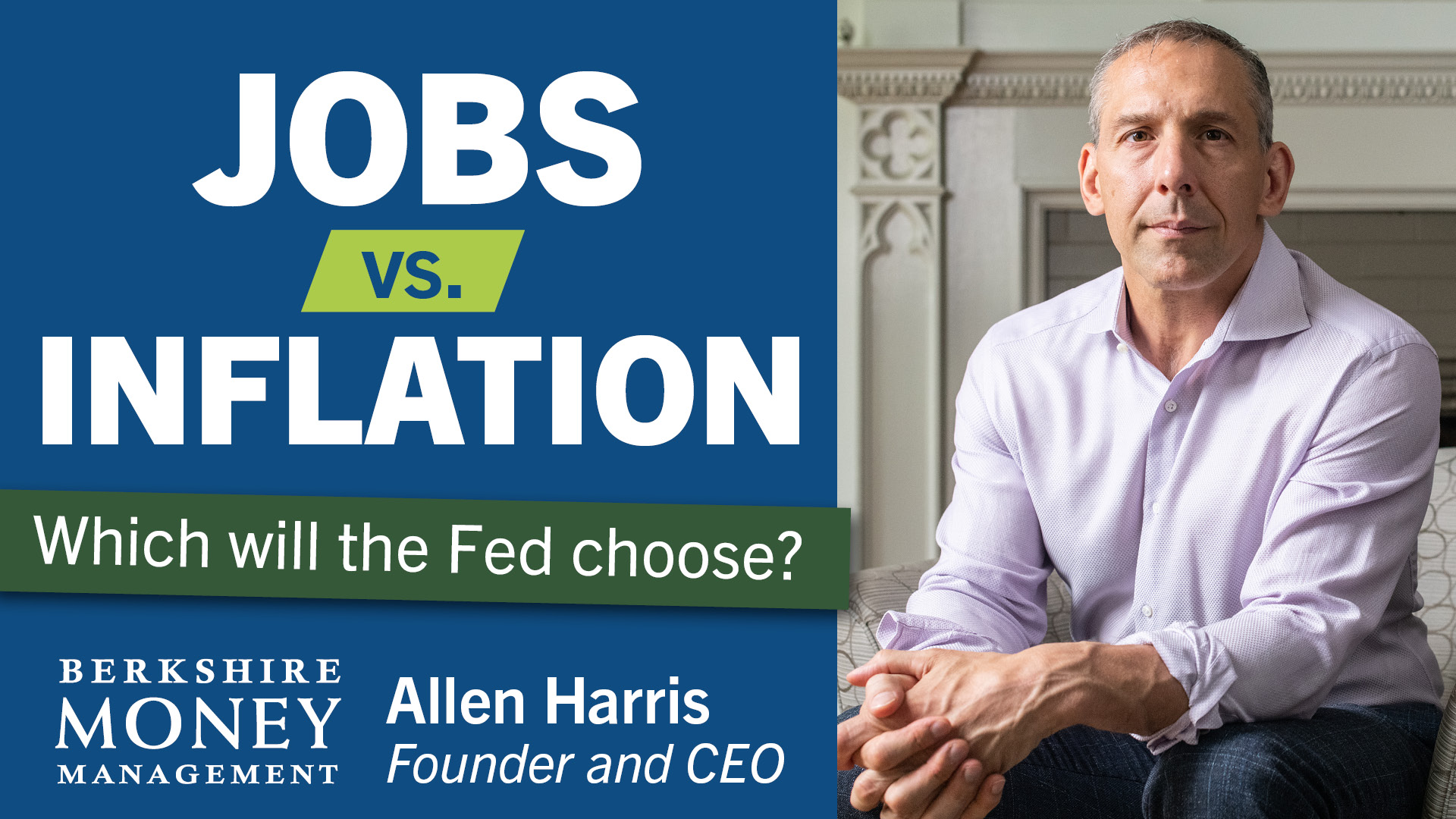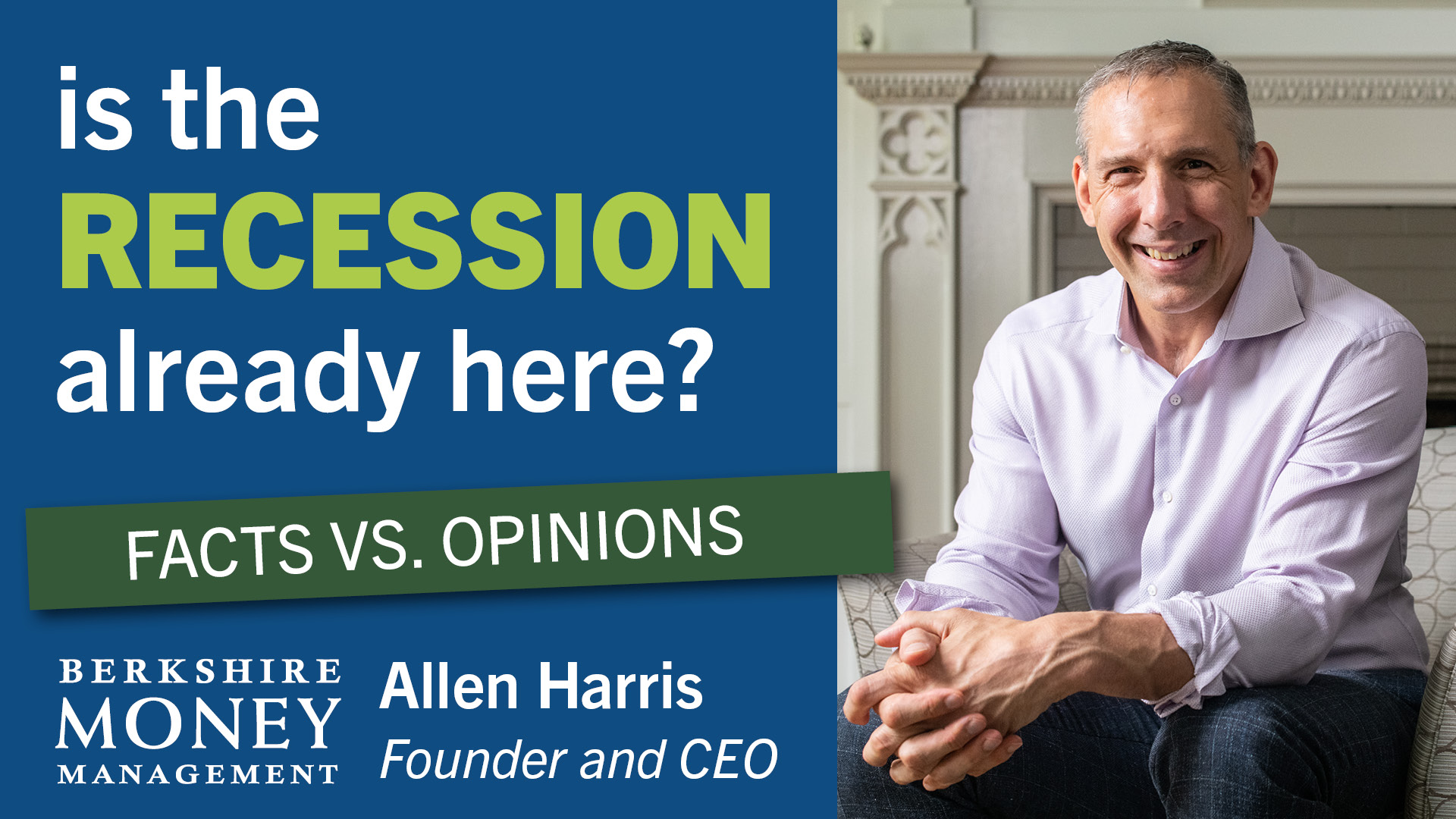Stock Market vs. Fed Rate Hikes in Volatile Market | Investor Pains

On June 15, 2022, the Federal Reserve’s Open Market Committee (FOMC) raised the federal funds rate to 1.65 percent. They vowed to “undertake open market operations as necessary to maintain the federal funds rate in a target range of 1.5-to-1.75 percent.” Let’s call it 1.75 percent for today’s discussion, which is in line with the usual commentary.
According to Bloomberg data, the bond market is pricing in that short-term interest rates will hit 3.6 percent.
How might short-term interest rates reach 3.6%?
Let’s plot how the Fed could drive short-term interest rates to 3.6 percent.
- As of June 15, 2022, the federal funds rate is 1.75 percent. At subsequent FOMC meetings,
- July 27, 2022, rates might go up by 0.75 to 2.50 percent.
- September 21, 2022, rates might go up by 0.50 to 3.00 percent.
- November 2, 2022, rates might increase by 0.25 to 3.25 percent.
- December 14, 2022, rates might increase by 0.25 to 3.50 percent.
- January 27, 2023, rates might increase by 0.25 to 3.75 percent.
- On March 17, 2023, the Fed might pause its rate increases.
The math matches up to expectations for the bond market. It’s reasonable to argue that the stock market has also priced in some of the expected rate increases. It has yet to be determined if stocks have priced in the associated economic damage. I don’t believe they have.
Currently, Standard & Poor expects operating earnings for the twelve months from the second quarter of 2022 to the second quarter of 2023 to be $233.71 for the companies of the S&P 500 index. The decline of the S&P 500 briefly brought the forward price-to-earnings (P/E) ratio down to 15.5.
Since 2015, the index has spent almost no time under 15-times expected earnings and only briefly approached 14 near the lows of 2018 and 2020. The index would need to drop to about 3,272 points to get the S&P 500 a 14 P/E with the current expected earnings. That would be about a 32 percent decline from its January 2022 peak.
Forward earnings often change. Suppose actual earnings end up being 5% lower than estimates. In that case, the S&P 500 had hit a forward price-to-earnings ratio of 16.4, in contrast to 15.5, and a more significant decline would have to occur to reach a 14 P/E. Keep in mind, hitting a 14 P/E is not necessary, no matter what the “E” ends up being.
Reaching a 14 P/E on the S&P 500 would be close to its 200-week moving average, which was 3,477 on June 15, 2022. The 200-day week moving average is a long-term level that some technical analysts target as a meaningful bottom. That’s still not great news, but I am here to inform you, not comfort you.
With the stock market down, here’s what I’m thinking about doing next
First, let’s acknowledge that asking how to position your investments defensively after a roughly 25 percent decline in the stock market could be a bit late. But there are still options if you want to add a little insurance to your portfolio.
It is not unreasonable to expect more of a decline in the stock market. However, it’s probably unreasonable to think this is not a good buying opportunity. Don’t let finding the lowest price get in the way of a reasonable price. I am a net buyer at these levels because no one can consistently time the bottom.
I’ve said it before, and I’ll say it again—smart people can seem stupid when they say anything positive amid the chaos. Pessimists appear brighter because the problems are visible. In contrast, optimism gives credence to things that have not happened. I may sound out of touch being constructive on the long-term nature of the stock market.
“Smart people can seem stupid when they say anything positive amid the chaos. Pessimists appear brighter because the problems are visible. In contrast, optimism gives credence to things that have not happened.”
When things looked great in 2021, I also sounded out of touch. I said that a bubble was forming in the stock market. In my January 25, 2021 column, I wrote, “the plan is to rotate slowly into less ‘bubbly’ areas over time and, if needed, react more quickly if we need to.”
As readers will recall, I shifted from growth to value in April 2021, more in January 2022, then again throughout the last couple of weeks. More recently, those moves might have seemed sane. But in 2021 and even in January 2022, I’m quite confident people thought I was foolish to go against the optimistic crowd.
I don’t remind readers of that to brag. I got a lot wrong in the last few years. I didn’t think COVID-19 would shut the world down. I should have bought a ton of Bitcoin; I purchased Treasury Inflation-Protected Securities and Emerging Markets to play inflation when I should have bought the commodities. A braggart wouldn’t remind you of those big misses. I am sharing my awareness that people generally don’t want to hear from the party pooper when things are great. And now that the world feels like it’s falling apart, my advice to find good buys, even if they aren’t at the lowest prices, is not what most readers want to read.
Some investors want me to say everything is fundamentally awful, and they should get out now. Why? Because selling would make the pain disappear, but they know it’s an irrational move. They want me to rationalize an emotional decision. I am not faulting those people. I understand, and I’ll give you a solution.
In a volatile market, consider ETFs
One of the things I am considering doing is adding more Buffer ETFs to my portfolios. The beauty of these tools is that you can manage some of your downside and still have exposure to equity-like returns, albeit capped. I’ve used many of the Innovator Funds tools in the past and told readers about them. I’ll let readers know when I do so again. If you prefer to act before I do—either to get exposure to the upside or to protect on the downside—I suggest two things. First, do so through your existing financial advisor (not me; your advisor knows your situation better than me). Second, be sure your financial advisor spends at least a few days taking diligent notes from the company’s education center.
The technical details – for the nerds
Author’s note: In the spirit of showing my work, the following four paragraphs are for nerds. If you don’t want to nerd out, please save yourself a headache and skip to the last paragraph.
I am not constructive on the market throughout the next few months. Still, things have gotten so bad that it’s probably encouraging for the market in the longer term. For example, the stocks which comprise the S&P 500 index are relatively oversold. As of June 17, 2022, only 2 percent of the stocks were trading above their respective 50-day moving averages. Major bottoms were made on March 23, 2020, and December 24, 2018, when that figure reached 1.2 percent.
That could be a setup for a big rally, but it’s not enough yet to match the levels of “the” bottoms of 2020 and 2018. As of June 17, 2022, 13 percent of the stocks in the S&P 500 were below their 200-day moving averages. On March 23, 2020, and December 24, 2018, those numbers reached 3 percent and 8 percent, respectively. I suspect we need lower stock prices before the final low is in, as opposed to a tradable low. The good news is that the 13 percent figure is a bottom five-percentile reading since 1994. It is a rare reading, but when it happened before, the median 12-month return for the S&P 500 had been 26.2 percent.
On June 14, 2022, the S&P 500’s 10-day advance-decline (A/D) reached negative breadth typical of market bottoms, according to Bespoke. The A/D line subtracts daily declining stocks from advancing ones and adds them up for the rolling 10-day period. When the number is negative, more stocks were down than up. It hit negative 1,907, which is in the bottom one percentile of readings since 1990 and compares to negative 1,879 for all declines greater than 10 percent. The stock market experienced average gains of 13.1 percent and 21.5 percent, respectively, following similar negative A/D declines.
It’s important to remember that I believe the U.S. economy is in a recession currently (as opposed to all the chatter about, “will there be a recession?”). Because of that, the S&P 500 officially entering a bear market has dire consequences. Despite reasonable valuations, stock prices can go lower. I grew up watching the VIX, or the “fear gauge,” to signal the bottom of a decline. A VIX at 50 has tended to be the closest thing to a bell ringing at the bottom, as I have seen. Unfortunately, the VIX is a significant distance from 50, meaning there could be more selling. However, the equity put/call ratio is creeping toward signaling a bottom. On June 21, 2022, the put/call ratio was 0.84. Meaningful bottoms were put in at 1.00, 1.13, and 1.14 in 2020, 2018, and 2016, respectively. We seem to be close to a low, but not there yet.
The bottom line
I suspect these next few months will get even more painful for investors. I do not trust anyone’s judgment, including my own, on calling the timing, or magnitude, of a final low. However, I have a higher conviction in my non-trading skills used in making longer-term assessments. I believe that stocks will have performed well by this time next year. Consequently, as was the situation a year-and-a-half ago, “the plan is to rotate slowly into less ‘bubbly’ areas over time and, if needed, react more quickly if we need to.”
Allen Harris is the owner of Berkshire Money Management in Dalton, MA, managing more than $700 million of investments. Unless specifically identified as original research or data gathering, some or all of the data cited is attributable to third-party sources. Unless stated otherwise, any mention of specific securities or investments is for illustrative purposes only. Adviser’s clients may or may not hold the securities discussed in their portfolios. Adviser makes no representations that any of the securities discussed have been or will be profitable. Full disclosures. Direct inquiries to Allen at [email protected].
This column first appeared in The Berkshire Edge on June 27, 2022.
Allen is the CEO and Chief Investment Officer at Berkshire Money Management and the author of Don’t Run Out of Money in Retirement: How to Increase Income, Reduce Taxes, and Keep More of What is Yours. Over the years, he has helped hundreds of families achieve their “why” in good times and bad.
As a Certified Exit Planning Advisor, Certified Value Builder, Certified Value Growth Advisor, and Certified Business Valuation Specialist, Allen guides business owners through the process of growing and selling or transferring their established companies. Allen writes about business strategy in the Berkshire Eagle and at 10001hours.com.





